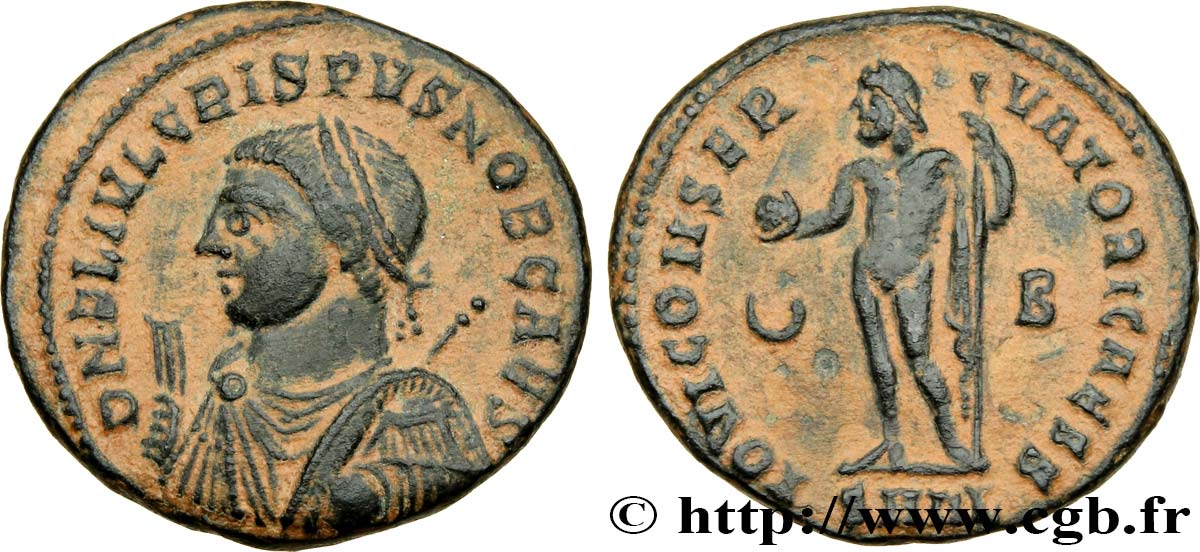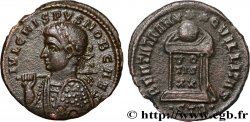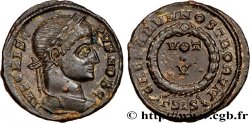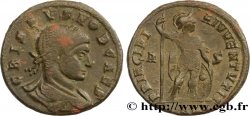Live auction - brm_543991 - CRISPUS Centenionalis ou nummus
You must signin and be an approved bidder to bid, LOGIN TO BID. Accounts are subject to approval and the approval process takes place within 48 hours. Do not wait until the day a sale closes to register. Clicking on "BID" constitutes acceptance of the terms of use of cgb.fr private live auctions.
Bids must be placed in whole Euro amounts only. The sale will start closing at the time stated on the item description; any bids received at the site after the closing time will not be executed. Transmission times may vary and bids could be rejected if you wait until the last second. For further information check the Live auction FAQ
All winning bids are subject to a 18% buyer’s fee.
All winning bids are subject to a 18% buyer’s fee.
| Estimate : | 200 € |
| Price : | 120 € |
| Maximum bid : | 177 € |
| End of the sale : | 26 January 2021 15:49:34 |
| bidders : | 1 bidder |
Type : Centenionalis ou nummus
Date: 317-318
Mint name / Town : Égypte, Alexandrie
Metal : copper
Diameter : 18 mm
Orientation dies : 12 h.
Weight : 3,64 g.
Rarity : R2
Officine: 2e
Coments on the condition:
Magnifique exemplaire pour ce type de monnayage sur un flan large bien centré des deux côtés. Buste de toute beauté. Très joli revers. Patine marron foncé et sable
Catalogue references :
Obverse
Obverse legend : D N FL IVL CRISPVS NOB CAES.
Obverse description : Buste lauré, drapé et cuirassé de Crispus César à gauche, vu de trois quarts en avant, tenant la mappa de la main droite, un sceptre et un globe de la gauche (B*17).
Obverse translation : “Dominus Noster Flavius Iulius Crispus Nobilissimus Cæsar”, (Notre seigneur Flavius Jules Crispus très noble césar).
Reverse
Reverse legend : IOVI CONSER-VATORI CAESS/ (CROISSANT)|B// SMAL.
Reverse description : Jupiter nu, debout à gauche, le manteau sur l’épaule gauche, tenant un globe nicéphore de la main droite et un sceptre long vertical de la gauche.
Reverse translation : “Iovi Conservatori Cæsarum”, (À Jupiter le protecteur de nos césars).
Commentary
Rubans de type 3 aux extrémités bouletées. Ptéryges fines sous le paludamentum. Ce type semble plus rare que ne le laissent supposer les ouvrages généraux.








 Report a mistake
Report a mistake Print the page
Print the page Share my selection
Share my selection Ask a question
Ask a question Consign / sell
Consign / sell
 Full data
Full data












